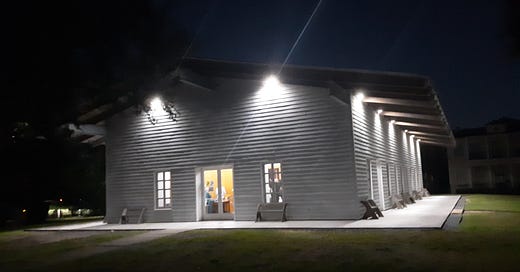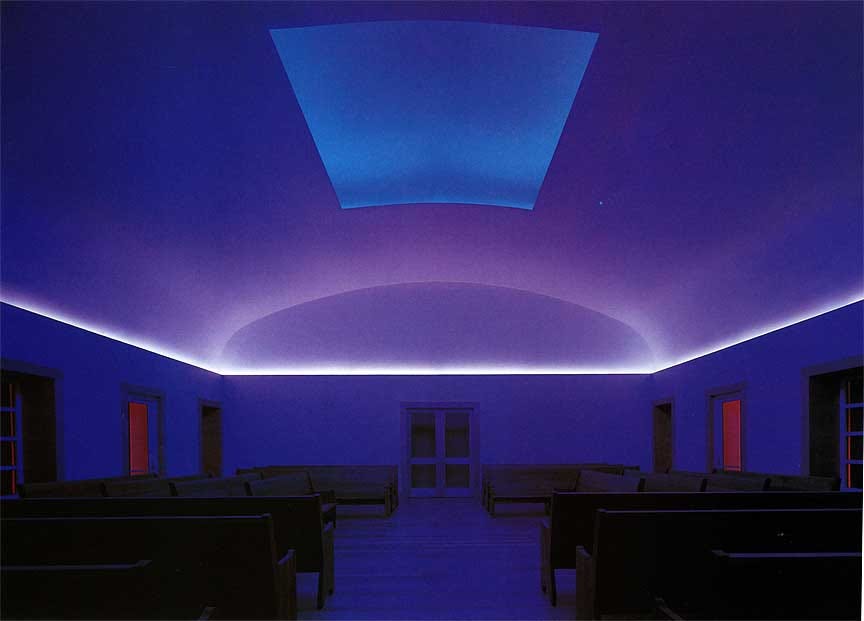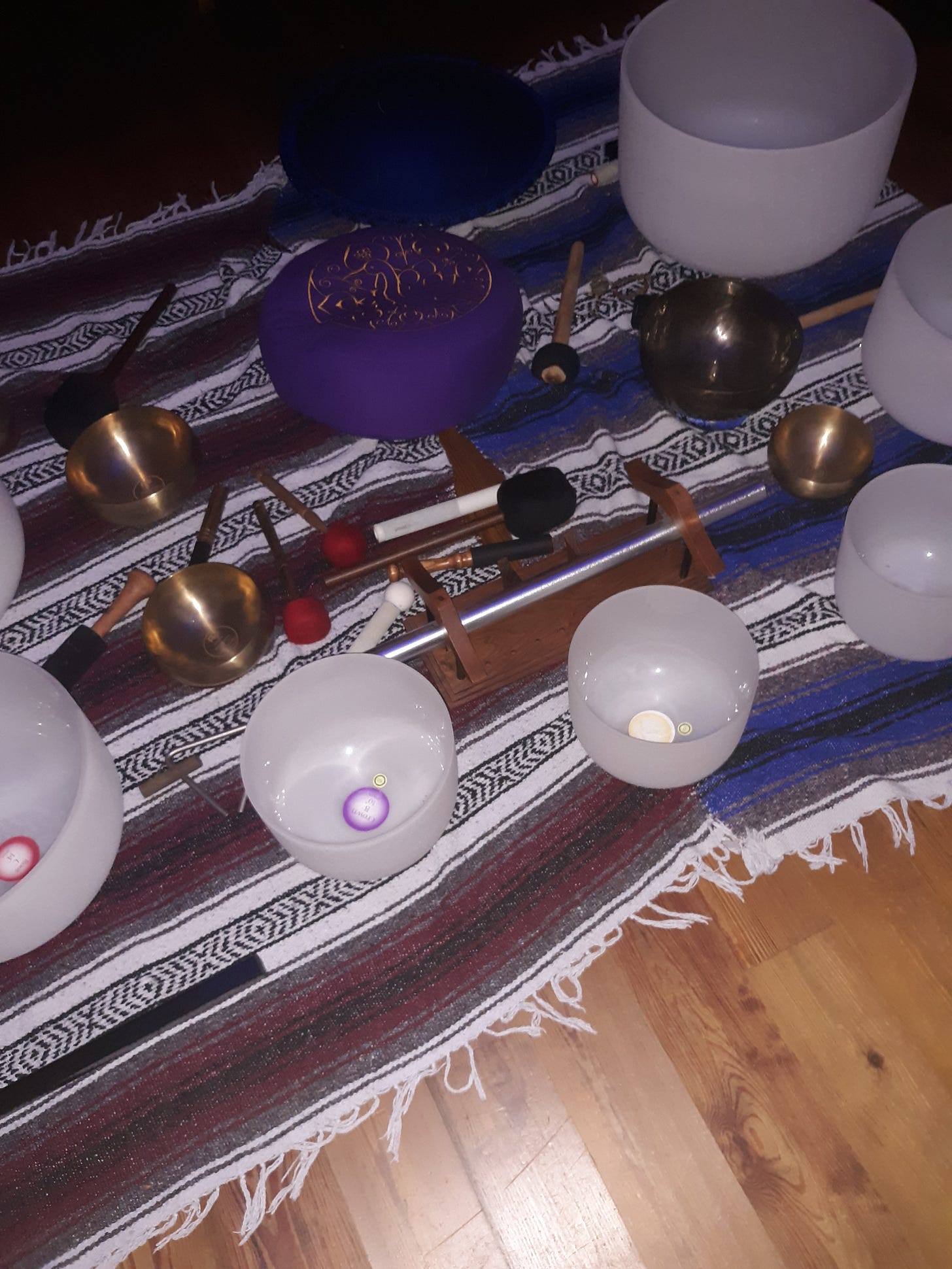There are several James Turrell structures in Houston: Skyspace on the campus of Rice University, The Light Inside tunnel under Fannin Blvd. at the Museum of Fine Arts, and The James Turrell Skyspace at the Live Oak Meeting. This last one was built in 2001 and is in a Quaker meeting space. I had never seen it in person until last night, despite knowing about it for years. Now I’ve seen it and my impression is it is the best of Turrell’s three Houston environments. Speaking to Art 21, the contemporary art TV series on PBS, he described the long, very deliberate planning process. “There was a dialogue about the meetinghouse and also the needs and the size, and those are the more important things to the portion I was involved with. Other things—materials and many things—came up, and they went through these things. And also Leslie Elkins, who was the architect, had some interesting parts, because Quaker decision making is by consensus. So, this is a rather slow process, purposefully so. And some people will think that Quakers are sort of the ultimate passive-aggressives, in that decision making can be nearly like procrastination.” I’m going to steal a photo from Art 21 because I couldn’t take a good photo of the interior with my phone last night
The reason I went last night was to see a dance performance by Transitory Sound and Movement Collective called A Conversation on Silence - Part 1. This was a three-person performance: dancer Annie Arnoult, violinist Carson Marshall and TSMC founder Lynn Lane. There were about 35 people in the audience. Everyone, including the performers, were masked up. The performance started at 8 pm, so it was still light outside. People used the big lawn south of the meeting house to walk their dogs and enjoy the humid, relatively mild twilight. (There had been a brief downpour about an hour earlier—the air was so heavy with moisture that my glasses immediately fogged up when I got out of my car). The meeting house has windows and glass doors along its length, so the activity outside was a little bit distracting, but over the course of the performance it got darker and darker outside (and inside).
.The meeting house is a long, barn-like structure with a high ceiling and a glowing blue hole in the roof. That is what caught my attention when I walked in. Turrell’s hole in the ceiling appears to be floating there. Looking into it, one cannot see any structure. It is blue space, with no visible corners or surface. It just seems to float, and subtly change as the it gradually got dark outside. Inside there were pews, but unlike a typical church, they all faced towards the center of the room.
The music was completely improvised—consisting of violin and various percussion instruments—ceramic and metal bowls which produced clear, ringing notes, two large gongs, and tiny chimes. The main percussionist was Lynn Lane, but all three of them played chimes and Carson Marshall hit a gong. Lane stayed mostly in the center of the hall, while Arnoult and Carson mostly walked around the perimeter
.The music was mostly tonal and quiet, almost whispery. The violin mostly played long whole notes, but was occasionally plucked. About hallway through the performance, Marshall stopped producing pure notes and made his violin-playing sound scratchy, and at the same time Lane started pounding the large gongs. The din was fantastic but short-lived. Afterwards Lane told me that while the piece was completely improvised, there was an intent to include this loud section at some point. But except for the loud episode, the music was formless and had no particular progression. It was an adagio soundscape. The music and environment directed one to silent contemplation. For a guy who’s mind races and whose attention wanders peripatetically, it’s a difficult environment—but I allowed myself to be quietly meditative for about an hour and a half last night.
The dancing, like the sound, was unassuming. I like dance in part because I like athletic people using their bodies in expressive ways. But Arnoult didn’t approach dance in that way. Her movements were quite slow, mostly, but occasionally jerky and quick. She walked slowly around the perimeter of the hall, occasionally crossing in the gaps between pews. Sometimes she even sat. When she carried her chime, she revolved it slowly around her head with one hand. It all seemed very deliberate, but toned down from what I ordinarily expect from dance. A more athletic dance would have been extremely difficult in that space. The dancer was in conversation with the quiet music and the Quaker vibe of the still, contemplative audience.
When they finished, there was a long period of silence before the three performers finally left the room. The silence was long enough that I could almost telepathically detect other people wondering if it was over. Should we get up and leave? You know how these things go—eventually one person stands up, and that gives permission to the next person. I liked the way that the end wasn’t announced. There was no applause or bows. Just a gradual exiting.
[Please consider supporting my work by becoming a patron, and you can also support my work by patronizing my online store. And one more way to support what I do here is to buy books through my bookstore. ]








This sounds sublime. Thanks for writing about the experience.